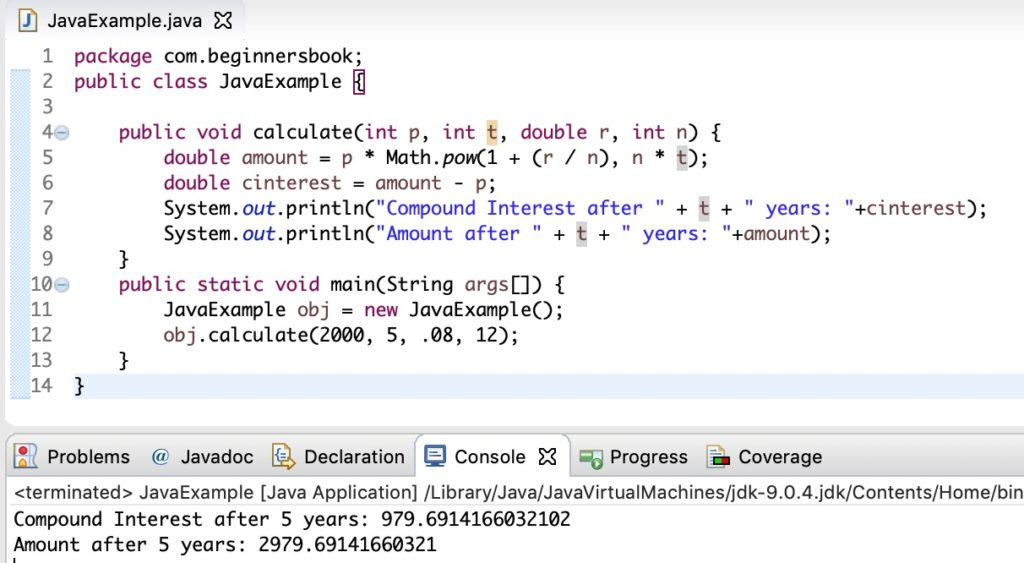In this tutorial, we will write a java program to calculate compound interest.
Compound Interest Formula
Compound interest is calculated using the following formula:
P (1 + R/n) (nt) - P
Here P is principal amount.
R is the annual interest rate.
t is the time the money is invested or borrowed for.
n is the number of times that interest is compounded per unit t, for example if interest is compounded monthly and t is in years then the value of n would be 12. If interest is compounded quarterly and t is in years then the value of n would be 4.
Before writing the java program let’s take an example to calculate the compound interest.
Let’s say an amount of $2,000 is deposited into a bank account as a fixed deposit at an annual interest rate of 8%, compounded monthly, the compound interest after 5 years would be:
P = 2000.
R = 8/100 = 0.08 (decimal).
n = 12.
t = 5.
Let’s put these values in the formula.
Compound Interest = 2000 (1 + 0.08 / 12) (12 * 5) – 2000 = $979.69
So, the compound interest after 5 years is $979.69.
Java Program to calculate Compound Interest
In this java program we are calculating the compound interest, we are taking the same example that we have seen above for the calculation.
public class JavaExample {
public void calculate(int p, int t, double r, int n) {
double amount = p * Math.pow(1 + (r / n), n * t);
double cinterest = amount - p;
System.out.println("Compound Interest after " + t + " years: "+cinterest);
System.out.println("Amount after " + t + " years: "+amount);
}
public static void main(String args[]) {
JavaExample obj = new JavaExample();
obj.calculate(2000, 5, .08, 12);
}
}
Output:
Compound Interest after 5 years: 979.6914166032102 Amount after 5 years: 2979.69141660321
Screenshot from Eclipse IDE:

Leave a Reply